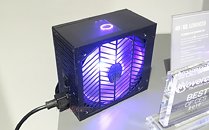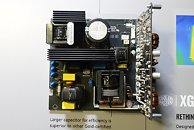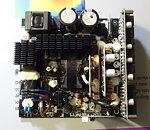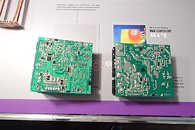- Joined
- Oct 9, 2007
- Messages
- 47,857 (7.38/day)
- Location
- Dublin, Ireland
| System Name | RBMK-1000 |
|---|---|
| Processor | AMD Ryzen 7 5700G |
| Motherboard | Gigabyte B550 AORUS Elite V2 |
| Cooling | DeepCool Gammax L240 V2 |
| Memory | 2x 16GB DDR4-3200 |
| Video Card(s) | Galax RTX 4070 Ti EX |
| Storage | Samsung 990 1TB |
| Display(s) | BenQ 1440p 60 Hz 27-inch |
| Case | Corsair Carbide 100R |
| Audio Device(s) | ASUS SupremeFX S1220A |
| Power Supply | Cooler Master MWE Gold 650W |
| Mouse | ASUS ROG Strix Impact |
| Keyboard | Gamdias Hermes E2 |
| Software | Windows 11 Pro |
Cooler Master this CES unveiled the XG-series Gold Advanced power-supply series. The company has re-imagined the various components that go into building a standards-compliant modern PC power-supply that's also feature rich in efficiency and protections. The XG series PCB gets rid of many of the components PSU designers would add as redundancies to compensate for lower quality, and switch to fewer but higher quality components. The company has also incorporated DC-to-DC switching to get rid of separate switching stages for lower voltage domains such as +5V and 3.3V. The new XG-series PSU PCB also features fewer but higher capacity wiring. The biggest dividend would be improved airflow within the PSU, which could be traded in for lower fan speeds and lower noise. Pictured below is a 750-Watt model compared to the PCB from one of Cooler Master's older generation 750 W 80 Plus Gold-level PSUs. Harsh steel alloy surfaces make way for lightweight acrylic panels held by steel frames. The company will launch this sometime in May.





View at TechPowerUp Main Site





View at TechPowerUp Main Site





